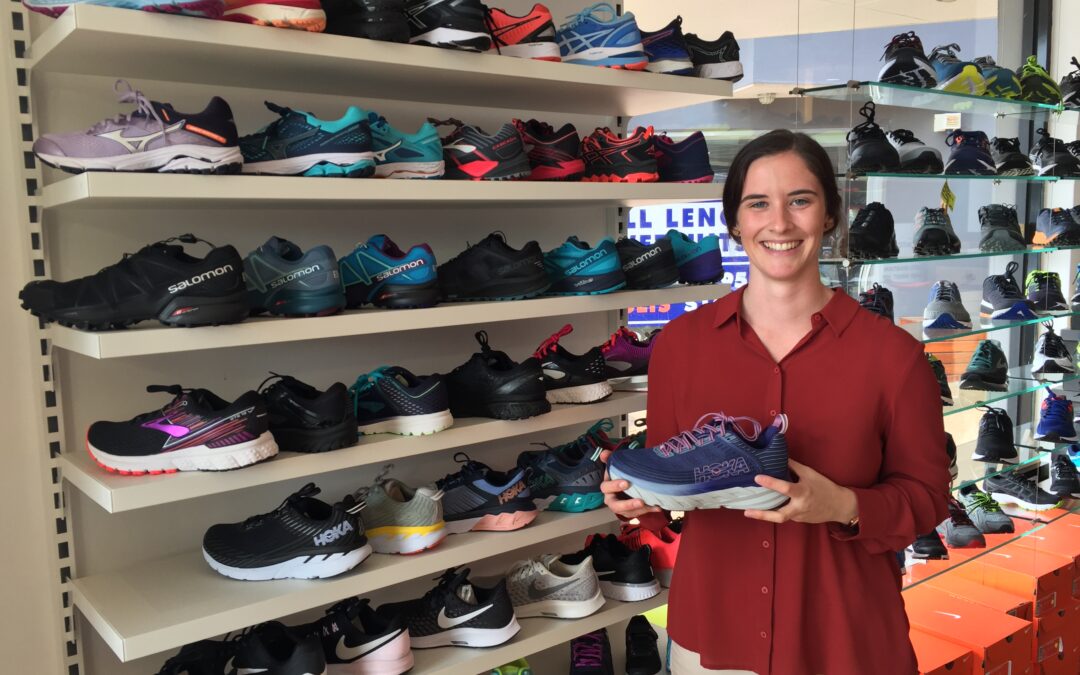Stack height, weight, correction, neutral, road, trail, cushioning, width… the list goes on!
Delving into the many variations of runners is a big task – there are many features to be aware of other than just the colour! It is not simple choosing the perfect pair of runners, and that is why there are many professional fitting footwear stores to help.
We are focusing on a local favourite, The Happy Runner, for this blog as we love supporting local business. And with training underway for the Great Ocean Road Festival, it is a great time to start thinking about getting fitted with the best pair for you.
Features to be aware of:
- Correction vs Neutral
- Runners are in two categories. Neutral – same density foam through the midsole, and Corrective – higher density foam on the medial side of the shoe. The corrective category ranges from minimal to high posting.
- Considerations – foot function, running style, injury and surfaces.
- Heel-toe drop
- The difference between the heel height and forefoot height.
- Considerations – Injuries to the heel or forefoot, running style and distance eg) You may opt for a higher drop if you have insertional achilles tendinopathy.
- Stack height
- Thickness of the sole ie. How much material is between your foot and the ground.
- Considerations – Do you like a soft cushioned feel underfoot or a more responsive feel? The higher the stack height, the more cushioning.
- Fit and Feel
- Comfort is king!
- The runner must fit well – length, width and depth. If you have two slightly different sized feet, always fit the biggest foot. There are many tricks with laces and extra liners that can help if needed.
Top Picks at The Happy Runner:
- Neutral
- Asics Nimbus
- Brooks Ghost
- Mizuno Rider
- Support
- Asics Kayano
- Asics 2000
- Brooks Adrenaline
- Nike Structure
- Maximal
- Hoka Bondi
- Hoka Clifton
Always remember to slowly adapt to your runners when they are new. Walk in them first for 1-2 days, then try a short run and gradually build up to your longer distances. Ideally get new runners before your old ones have completely had it and alternate for a few weeks.
This is a very general guide and we always recommend a Podiatry assessment if you have an injury or have had injuries running in the past.
Any questions please let me know! We are always here to help.
Maddie McMahon
Podiatrist
